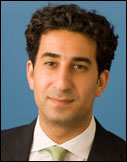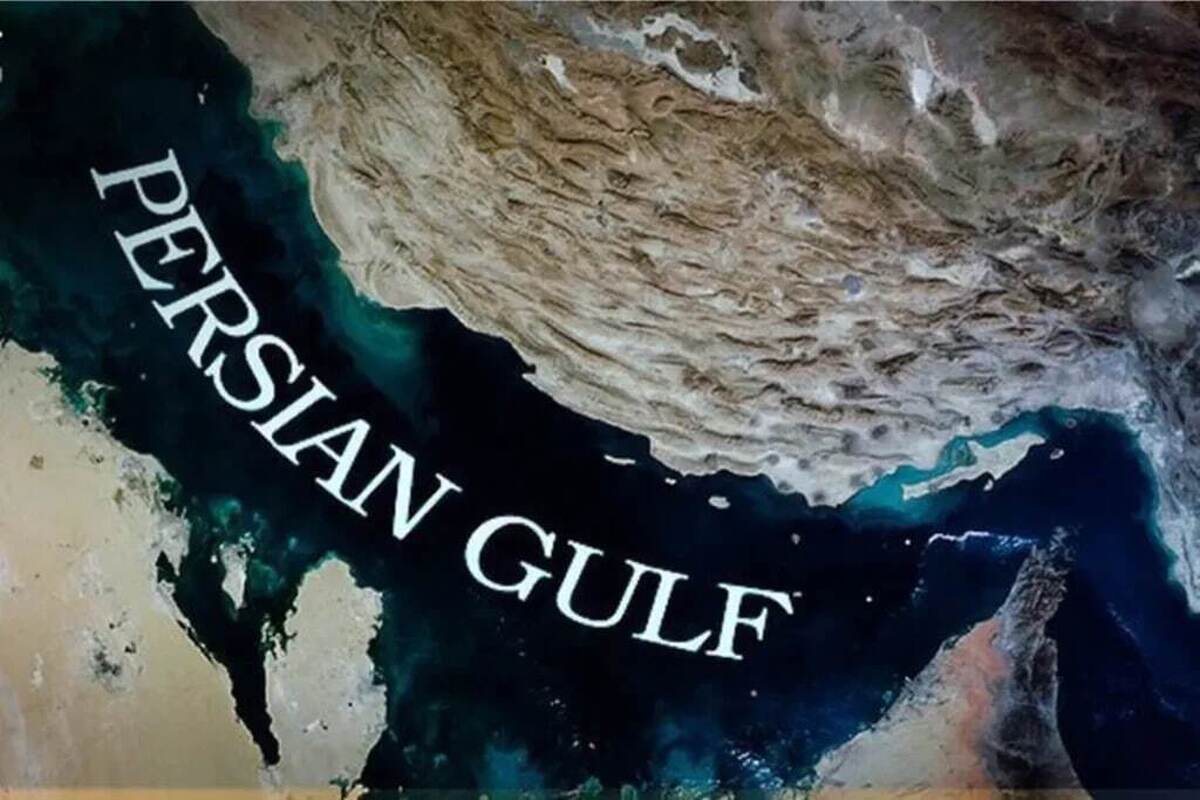
The High-Stakes Confrontation Between Trump and Khamenei
Karim Sadjadpour
President Donald Trump doesn’t want conflict. Ayatollah Khamenei doesn’t want economic collapse. Yet that is where things are headed.
Put yourself in the shoes of Iran’s 80-year-old supreme leader, Ayatollah Ali Khamenei. His regime is beset by nearly 50 percent inflation, a collapsed currency, persistent labor strikes, and an irrepressible women’s-rights movement. Epic floods recently killed more than 75 people and caused nearly $3 billion in damage. A locust plague is threatening 300,000 hectares—$9 billion worth—of farming land. “Things have never been this bad” is a refrain commonly heard from Iran these days.
Beyond its borders, Iran is spending several billion dollars annually to arm and finance regional allies—including Syria’s Assad regime, Lebanese Hezbollah, Iraqi Shia militias, and the Houthis of Yemen—that offer little financial return on that investment. Direct flights between Tehran and Caracas have resumed so Iran can prop up the embattled Maduro regime.
Against this backdrop, a U.S. president whom Khamenei has described as “mentally retarded”—Donald Trump—is pursuing a relentless economic-pressure campaign seemingly intended to force either Iran’s capitulation or its collapse. First, in May 2018, Trump unilaterally pulled out of the Iran nuclear deal. In April 2019, the State Department officially designated Iran’s most powerful political and economic institution—the Islamic Revolutionary Guard Corps (IRGC)—a terrorist organization, further rendering that group an international pariah. And now Secretary of State Mike Pompeo has announced that no countries will be granted further exemptions to import Iranian oil, an attempt to choke the lifeblood of Iran’s economy.
“Everyone has a plan until they get punched in the mouth,” Mike Tyson has famously said. Khamenei’s reaction—or lack thereof—to being punched by Trump repeatedly could have important consequences for the global economy, the stability of Iran and the Middle East, and even America’s 2020 presidential election.
Rarely have an American president and his national security adviser held more divergent views than Donald Trump and John Bolton. Trump has repeatedly expressed an aversion to greater U.S. involvement (including conflict) in the Middle East, and his affinity for autocrats makes clear that he has no interest in democracy promotion or regime change in Iran. He has made numerous unreciprocated efforts to meet Iranian President Hassan Rouhani and has told aides and foreign leaders that his “maximum pressure” campaign is designed to be a prelude to diplomacy, not conflict.
Bolton, by contrast, has a long history of advocating both military strikes and regime change against Iran. Pompeo has sought to reconcile these contradictory impulses by focusing on the means—that is, by raising the pressure—rather than the endgame. “The worst fear of Bolton and Pompeo,” a senior State Department official told me, “is that the Ayatollah [Khamenei] writes Trump a letter, suggesting a get-together. They know the president would jump at such an opportunity.”
Can Khamenei overcome his pride and cynicism to try to exploit the Trump administration’s internal divides, or will he choose to escalate? An insufficient response to American bullying could cause him to lose face; an excessive response could cause him to lose his head. Khamenei essentially has three options, and all of them are fraught with risk:
Strike a Deal With Trump
The quickest way for Khamenei to halt Iran’s economic hemorrhaging would be to allow Rouhani to pursue a deal with the Trump administration. Given Trump’s weakness for flattery and disinterest in details, it’s conceivable Tehran could get an even better deal with Trump than it did with Obama.
While this outcome is plausible, it’s highly unlikely. Khamenei’s longtime distrust of the “deceitful, untrustworthy, and back-stabbing” U.S. government was vindicated after Trump pulled out of the Joint Comprehensive Plan of Action—the Iran nuclear deal—and he understandably fears that giving in to pressure may encourage Bolton and Pompeo to turn the heat up, not off. For Khamenei, subjecting 80 million Iranians to another 20 months (at least) of economic hardship may be preferable to holding his nose, swallowing his pride, and doing a deal with Trump.
Wait Trump Out
While Khamenei had vowed to “burn” the JCPOA were the United States ever to renege on its commitments, Tehran’s response to Trump’s provocations has so far been restrained. Iran has complied with the nuclear deal and has yet to react to the Trump administration’s designation of the IRGC as a terrorist group. Although one of the strategic goals of this restraint was to show the world it is the United States, not Iran, that deserves to be isolated, America’s economic might has rendered this strategy moot. “One of the strongest industrialized countries in the world has made a political decision.” Ralf Thomas, the CFO of Siemens, said last year. “As an industrial company, we have to recognize that.”
Former—and potentially future—U.S. officials have sought to reassure Iranian Foreign Minister Javad Zarif and Rouhani that Trump is a weak president unlikely to get reelected, and a Democratic president will swiftly return to the JCPOA come January 2021. Exercising such strategic patience, however, is a risky strategy for Khamenei. In addition to the possibility that Trump will get reelected, Khamenei rightfully fears that if Iran sits on its hands until January 2021, even Democrats may come to believe that the United States can eat its cake and have it too. “Why should we lift sanctions,” a former Obama-administration official asked rhetorically, “when they’ve stayed committed to the deal for four years and will use the sanctions relief to support our adversaries?”
Counter-escalate
If Khamenei believes he can’t do a deal with Trump, and he fears that waiting out Trump projects weakness, he may contemplate restarting Iran’s nuclear program, counter-escalating against U.S. interests and allies in the Middle East, or both. Iran is the only country in the world simultaneously fighting three proxy wars—against the United States, Israel, and Saudi Arabia—each of which it could further agitate. Indeed, Arab Gulf officials claim to have picked up intelligence indicating that Tehran is planning to agitate against them in the region, via proxy. Given the already turbulent state of the Middle East and Trump’s inclination to further withdraw from the region of “death and sand,” however, Tehran’s threat to destabilize is a weakening asset.
If Tehran chooses to recommence its nuclear activities, it will likely do so very deliberately—still under the guise of a civilian energy program—to avoid triggering a unified international response. Iran’s renewed nuclear activities, coupled with an absence of international resolve, would force the United States and Israel to contemplate once against the possibility of military action against Iran’s nuclear facilities. Either Iranian escalation—nuclear or regional—could undermine Trump’s desire to withdraw from the Middle East as America’s regional allies, particularly Israel and Saudi Arabia, would request a greater U.S. presence to counter an agitated Iran.
Despite the overwhelming criticism of Trump’s maximum-pressure campaign, there are already signs of its impact on Iranian thinking. Whereas last year Khamenei strictly prohibited any talks with the United States on any issues and forbade Rouhani from accepting Trump’s offer to meet “anytime and without preconditions,” Zarif now appears eager to open a channel of communication with Washington—starting with hostage negotiations—and took the unprecedented step of appearing on Fox News to directly appeal to Trump.
Yet Khamenei’s 30-year tenure as supreme leader has honed his three-dimensional chess skills, and it’s likely that he may pursue these three seemingly contradictory objectives—negotiations, strategic patience, and escalations—simultaneously. While Zarif is waving a flag of diplomacy, Khamenei will likely simultaneously authorize Qassem Soleimani, commander of the IRGC’s Quds Force, to activate Iran’s regional proxies against U.S. allies and interests in the Middle East. Whereas Washington amasses leverage with economic sanctions, one of Tehran’s few sources of leverage is its ability to sow chaos and carnage.
Just as the Iran hostage crisis ended the Carter presidency, Iran-Contra tainted the Reagan presidency, and the Iran nuclear program and deal engrossed the Obama presidency, Trump’s Iran gamble could similarly consume the duration of his first term and either boost or bust his chances of a second term. Iran, to help ensure that Trump is a one-term president, should be expected to pursue policies that could trigger regional unrest and a spike in oil prices, increasing the anxieties of American voters.
Khamenei and Trump have a mutual interest in averting conflict and cooperating, but they face a prisoner’s dilemma. As the example of both the 2015 JCPOA and the current nuclear negotiations with North Korea illustrate, the path to diplomacy is often paved with mutual threats and escalatiromon. While the winner of the Trump-Khamenei face-off remains unclear, the biggest losers of the next two years will almost certainly be the people of Iran, as well as the inhabitants of Middle East countries where Iran wields influence.
Karim Sadjadpour is a senior fellow at the Carnegie Endowment for International Peace, where he focuses on Iran and U.S. foreign policy toward the Middle East.
Published from carnegieendowment.org



